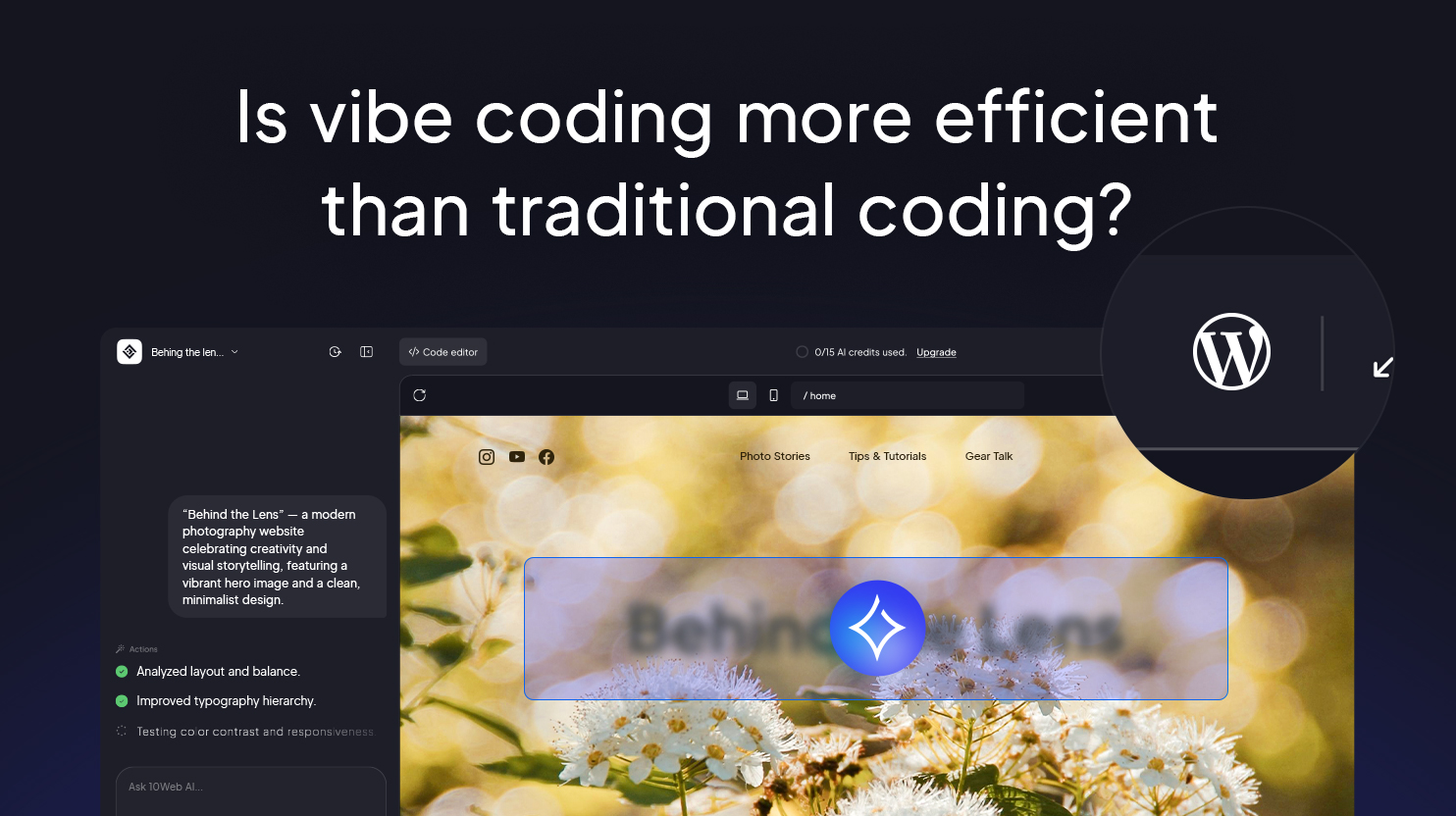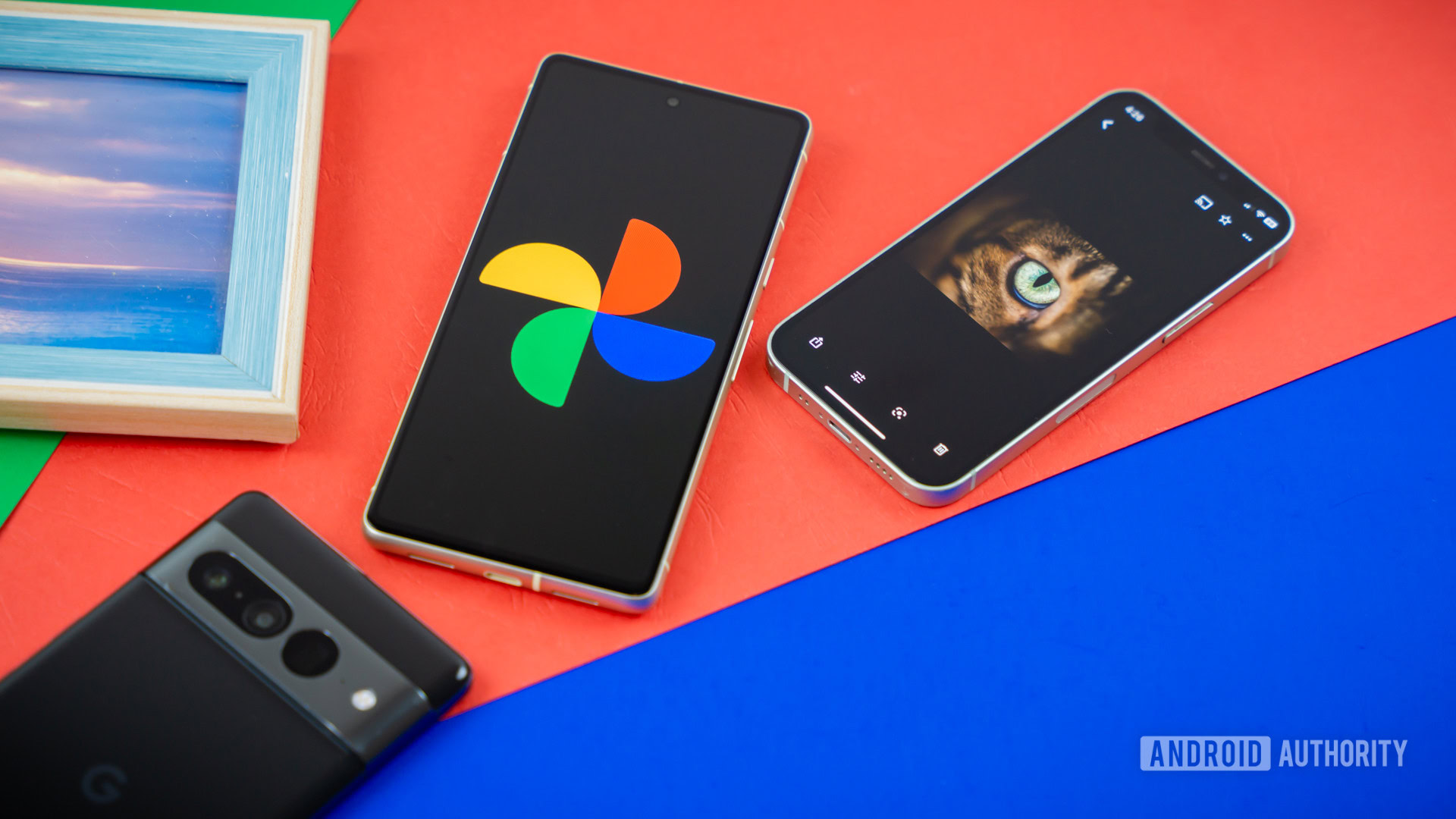The concept of “vibe coding,” which refers to AI-assisted, prompt-based coding, is often seen as the shortcut to instant efficiency in development. But after the initial excitement of showcasing what can be built with just one prompt, the cracks in the exterior begin to show. Speed doesn’t always equate to efficiency.
So, is vibe coding more efficient than traditional coding? The answer largely depends on:
- Who’s vibe coding (Coders vs non-coders)
- The type of project at hand
- The underlying systems in place to support real-world results
Vibe coding can be significantly more efficient than traditional coding, but results vary wildly. Success hinges on choosing a vibe coding platform that supports an AI-augmented workflow.
Redefining efficiency in development
Achieving efficiency in development goes beyond just “working faster.” It’s about harmonizing three essential elements:
- Velocity: How swiftly can we deliver valuable results?
- Quality: How durable, secure, and maintainable are these outcomes?
- Throughput and longevity: How seamlessly can we scale results across teams, systems, and iterations?
While traditional coding tends to emphasize quality and throughput (sometimes at the expense of speed), AI-driven vibe coding focuses on enhancing velocity. Though it often faces obstacles in consistency and integration. The challenge for teams is to discover a strategy that successfully integrates all three elements, paving the way for efficiency.
The two faces of vibe coding
Recent research reveals that AI software development tools are evolving into two distinct categories, each serving an overlapping, but largely distinct group:
- Developer-centric tools, such as Replit, Cursor, and Windsurf, enhance the productivity of professional engineers by automating coding tasks.
- Creator-centric vibe coding platforms like Lovable, and Bolt.new, which are tailored for non-technical users who want to build production-grade websites or applications without writing any code.
Even though both types of AI development tools can write code, the distinction between “copilot vs. creator” reveals a divide that suggests efficiency looks quite different for each of these overlapping groups.
The copilot model serves developers who already understand architecture and syntax. These tools increase efficiency by:
- Debugging and automating tests
- Auto-complete code suggestions
- Generating boilerplate code
Their efficiency depends on the developer’s skill and ability to manage the project. In the right hands, these tools can make traditional development more efficient than pure vibe coding in some ways.
Senior developers often find that their experience allows them to harness AI for writing code (i.e., vibe coding) while they keep a firm hand on the wheel. AI boosts their efficiency by writing code and automating tasks while they orchestrate the logic and architecture.
The vibe coding creator model removes the access barrier. Platforms like Lovable and Bolt.new help non-coders like designers, marketers, and small-business owners to build functional software without the need to code. The tradeoff is increased velocity, often at the cost of precision. But depending on the project and platform, the ability to vibe code is potentially far more efficient than learning to code.
The biggest drawback is that those without coding experience may need to invest just as much time figuring out how to fix AI-generated mistakes as they do creating. If you don’t know how to read the AI-generated code, you’ll have to rely on prompting the AI for a fix.
Why vibe coding efficiency often fails to deliver
While vibe coding is an exciting development that’s becoming more mature, it also brings some challenges, especially in production environments. Known weaknesses include:
- Error propagation: Although AI-generated code may seem perfect at first glance, it can run into issues under real-world circumstances or scaling.
- Integration gaps: Vibe coders might find it difficult to connect smoothly with APIs or existing systems.
- Version-control chaos: Without a clear source of truth, managing contributions from teams and AI can become complicated.
- Security and governance concerns: Using unverified dependencies and rubber stamping AI-written code introduces potential risks.
- Prompt dependency: The efficiency of the process heavily depends on how effectively users interact with the AI.
It’s important to understand that these challenges are not just minor inconveniences. If you rely on vibe coding, they can significantly impact maintainability, collaboration, and overall return on investment.
Unlike traditional coding, which includes essential components like testing, deployment, and versioning, many vibe-coding tools often overlook these crucial aspects. This is why organizations that adopt AI development typically rely on established infrastructures for the best results. While AI can generate code, the support of traditional systems is essential for maintaining sustainability in the development process.
When vibe coding is more efficient
While vibe coding is still maturing, it can outperform traditional methods under the right conditions:
- Experienced oversight: Senior developers guiding AI generation and refactoring outputs.
- Tight feedback loops: Conversational, iterative prompting paired with immediate testing and code review.
- Low-integration builds: Prototypes, websites, or internal dashboards where stability demands are lower.
- Governed environments: Systems that enforce version control and deployment standards.
In these cases, AI acts less like a replacement for coding skills and more like an acceleration layer. Efficiency is about reducing friction between intent and outcome. The closer a vibe coding platform aligns those two, the greater the efficiency gains.
Describe your dream site. Watch it come to life.
Vibe code your way to production-ready websites running on the WordPress backend. Zero coding required.
Efficient vibe coding leverages mature infrastructure
Most discussions about vibe coding focus on the AI model, but the real limiting factor is the maturity of the infrastructure. Traditional technology stacks have spent decades addressing challenges that vibe coding tools are now starting to face, such as dependency management, security updates, and scalable deployment.
This is where the next generation of vibe coding platforms leaves traditional coding in the dust. Vibe for 10Web combines an AI-native frontend (React and Tailwind) with the proven reliability of the WordPress backend. The outcome is a system that enables a smooth transition from prompt to production, maintaining the speed and efficiency of vibe coding while benefiting from the governance, versioning, and extensibility of a mature content management system (CMS).
How 10Web’s Vibe for WordPress solves the efficiency paradox
Vibe for WordPress makes vibe coding more efficient than traditional coding because its design tackles the realities that make or break vibe coding in practice.
| Efficiency Pillar | Traditional Development | Typical Vibe Platform | Vibe for WordPress |
| Velocity | Manual setup, slower iteration | Fast but often messy generation | Fast + guided AI development workflow |
| Quality | High but resource-intensive | Inconsistent, lacks guardrails | AI + tested WordPress foundation |
| Throughput | Requires dev ops & QA | Hard to scale or collaborate | Built-in governance, hosting, and version control |
With 10Web, vibe coders don’t need to choose between flexibility and control. AI handles the repetitive work of creating pages, styling components, and generating content, while the platform enforces WordPress-native standards for structure, security, and performance. Developers and non-technical creators can collaborate in the same environment, reducing context switching and eliminating the integration overhead that kills most AI-built projects.
In other words, 10Web makes vibe coding production-grade. It brings together the efficiency gains of vibe coding with traditional development governance and versioning.
Efficient under the right conditions
Vibe coding efficiency is subjective. It depends on:
- Who’s building: Experienced developers will probably get better results, more efficiently than first-time creators.
- What’s being built: Is it a straightforward project or a scalable product?
- What system supports it: Are governance, versioning, and QA embedded in the workflow?
So, is vibe coding more efficient than traditional development?
Yes, if you define efficiency as the ability to turn intent into execution faster.
No, if you assume AI generation alone can replace the structure that makes software reliable.
True efficiency gains rely on AI-native environments built on proven foundations, where prosumers and engineers share a common pipeline from idea to deployment.
Vibe for WordPress, goes a step further, using mature tech combined with the power of front end vibe coding to make building modern websites faster than ever before. Try it today and see how vibe coding can be more efficient than traditional development.

Describe your dream site. Watch it come to life.
Vibe code your way to production-ready websites running on the WordPress backend. Zero coding required.
FAQ
What’s the difference between vibe coding and traditional coding?
Traditional coding requires writing and maintaining code manually, while vibe coding uses AI prompts to generate and edit code dynamically. The key difference isn’t just speed—it’s workflow. Traditional coding optimizes for precision; vibe coding optimizes for iteration. With tools like 10Web’s Vibe for WordPress, you get both: AI handles creation, while the WordPress foundation ensures structure, versioning, and reliability.
What are the main benefits of vibe coding?
Vibe coding accelerates early-stage development—designing interfaces, generating boilerplate, or prototyping features in minutes. For small businesses or agencies, that means faster launches and lower development costs. The catch is keeping quality consistent, which is why Vibe for WordPress integrates AI creation into a proven production system rather than starting from scratch.
Which type of coding is best for efficiency?
It depends on who’s doing the work.
· Experienced developers are more efficient using AI copilots like Replit or Windsurf.
· Non-technical creators gain efficiency from platforms like 10Web, which merge AI generation with no-code control.
The best choice isn’t one or the other—it’s the approach that reduces friction between idea and deployment.
Is vibe coding good for beginners or non-coders?
Yes—but only when guardrails are in place. Most pure AI coding tools assume technical literacy, which leads to confusion and rework. Vibe for WordPress bridges that gap with guided AI workflows built on the familiar WordPress backend, giving non-coders a safe, visual, and reliable path to production.
How is spec coding different from vibe coding?
Spec coding follows a written specification before development begins. Vibe coding, on the other hand, lets creators build iteratively by describing intent in natural language. In practice, the two can coexist: many teams use AI to prototype from a “vibe,” then refine through specs. Platforms like 10Web’s Vibe for WordPress make that loop fast, safe, and ready for deployment.










